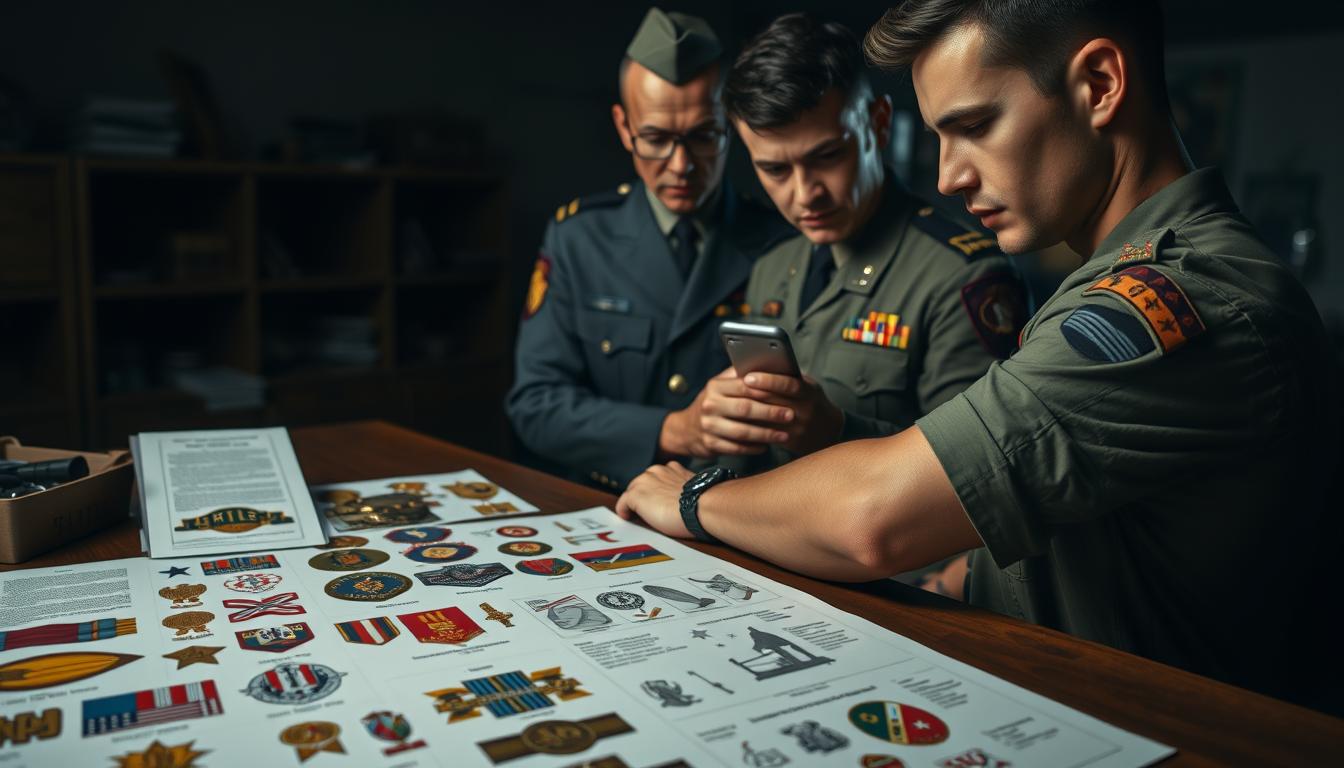
What’s stopping you from joining the military with tattoos? Decades ago, body art might’ve disqualified aspiring recruits outright. Today, regulations have shifted dramatically, reflecting society’s growing acceptance of self-expression. Nearly half of young adults now sport ink, and armed forces branches are adapting to stay competitive in recruitment.
Recent updates, like the Marine Corps allowing sleeve tattoos and relaxing rules for officers, signal a broader trend. While policies vary slightly between branches, most share core principles: professionalism matters most. Visible designs on hands, necks, or faces often remain restricted, and offensive imagery is universally banned.
Why do these rules exist? They balance individuality with the military’s need for discipline and public trust. Even as restrictions ease, certain limits ensure service members present a cohesive, respected image. The evolution from strict bans to nuanced guidelines mirrors shifting cultural attitudes—proving tradition and modernity can coexist.
Key Takeaways
- Each military branch has unique guidelines for acceptable body art.
- Recent policy changes reflect increased flexibility, especially for visible ink.
- Rules prioritize professionalism, discipline, and public perception.
- Offensive content or certain placements (face, neck) remain prohibited.
- Modern policies align with societal trends to attract diverse recruits.
Overview of Military Tattoo Policies
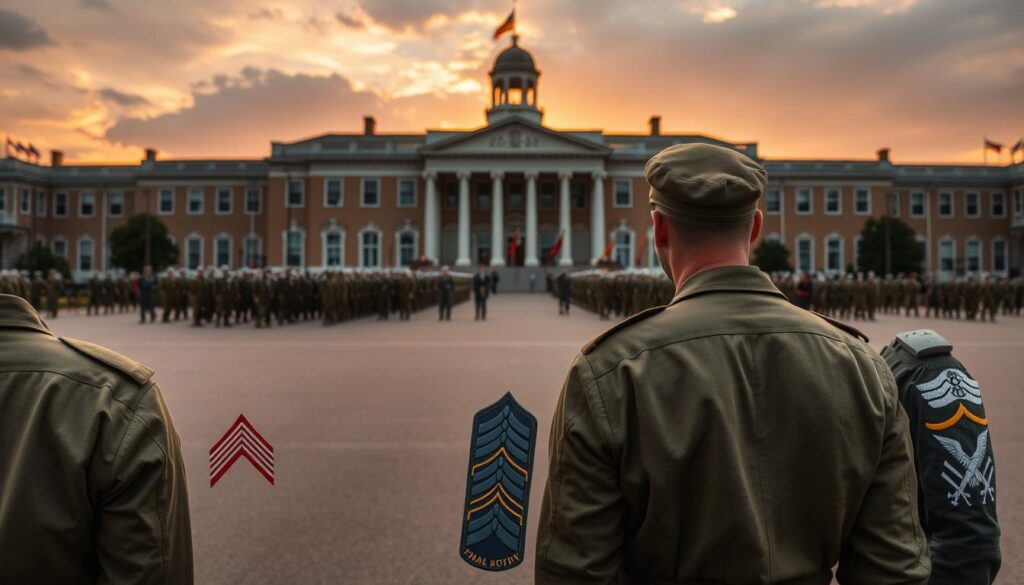
Decades of strict bans have given way to modernized rules that mirror civilian trends. Nearly half of recruits under 35 now arrive with body art, forcing armed forces to rethink tradition. This shift balances discipline with practical recruitment needs.
Evolution of Tattoo Regulations
Early 2000s policies banned visible ink below the elbow or knee. By 2015, the Army permitted hand tattoos smaller than a dollar bill. The Marine Corps’ 2022 update allows full sleeves if they don’t show under PT gear.
Consider these key changes:
| Time Period | Policy Focus | Example |
|---|---|---|
| Pre-2010 | Visibility Restrictions | No neck/hand designs |
| 2015-2020 | Size Limits | 1-inch hand tattoo allowance |
| 2022-Present | Practical Adaptations | Sleeve tattoos permitted |
Why the Policies Changed
Recruitment struggles drove updates. Army research shows 41% of potential enlistees aged 18-34 have body art. A 2019 Ipsos poll revealed 30% of Americans sport ink—up 9% since 2012. Retention also played a role: “We can’t afford to lose skilled personnel over arm tattoos,” notes a Pentagon advisory memo.
Modern rules still ban offensive symbols or face markings. But relaxed placement guidelines help armed forces stay competitive in tight job markets while maintaining professional standards.
Can you have tattoos in the military?
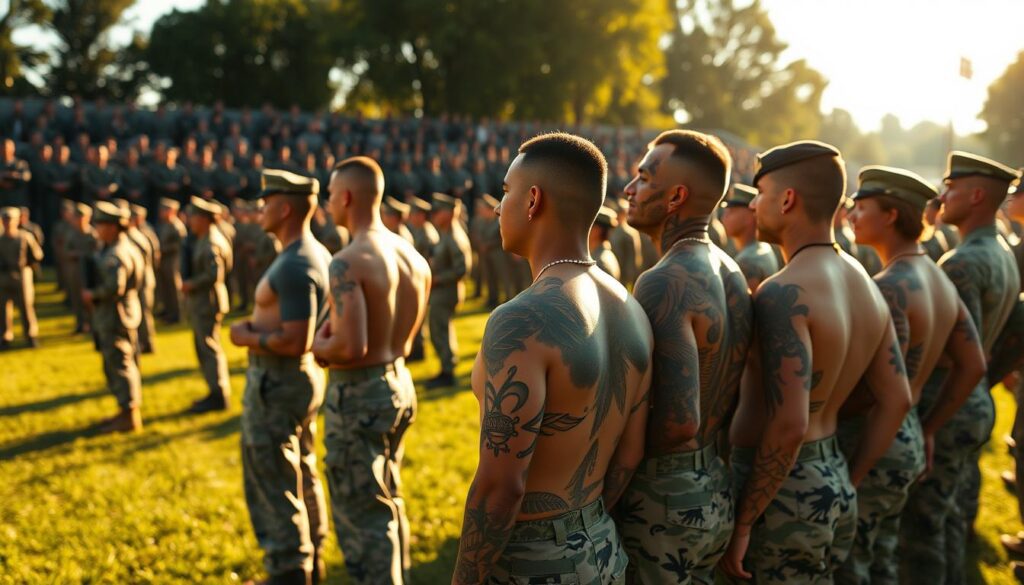
Thinking about enlisting but worried your ink might be a problem? Today’s armed forces welcome body art within defined parameters. While policies differ slightly between branches, most share core restrictions: no markings on the face, scalp, or eyelids. Neck and hand designs face tighter scrutiny, with size and content rules varying by service.
Modern regulations prioritize a professional appearance without stifling individuality. A 2023 Pentagon report notes: “Body art no longer defines capability—leadership and skill do.” This shift reflects a broader cultural acceptance of self-expression while maintaining respect for uniform standards.
Key considerations include:
- Designs must avoid offensive symbols or extremist affiliations
- Visible placements may require approval during recruitment
- Excessive coverage could limit certain roles
Nearly 60% of recruits under 30 now enter service with at least one tattoo, according to Defense Department surveys. Updated policies ensure talented candidates aren’t excluded for body art alone—provided it aligns with military values. Always verify your branch’s latest guidelines before enlisting.
Branch-Specific Tattoo Policy Breakdown
Body art regulations differ significantly across service branches. While all prioritize professionalism, each branch crafts unique rules balancing tradition with recruitment needs. Let’s explore current guidelines shaping enlistment standards.
Army Updates Lead Flexibility
The Army now permits limited hand and neck designs. Soldiers may sport one 1-inch tattoo per hand, a 2-inch neck marking below the hairline, and 1-inch ear tattoos. This 2023 revision reflects efforts to attract skilled candidates without compromising discipline.
Maritime Service Standards
The Navy stands alone allowing a single 1-inch neck tattoo. Full sleeves remain acceptable if hidden under dress uniforms. Meanwhile, the Coast Guard mirrors Navy guidelines but prohibits all neck markings except behind the ear. Both services ban extremist symbols and vulgar content.
Progressive Space-Age Policies
The Air Force and Space Force lead in leniency with no size restrictions. Technical roles prioritize skill over appearance, though face/neck designs remain barred. A Space Operations Commander notes: “We assess capabilities, not body art—provided it aligns with core values.”
| Branch | Allowed Areas | Size Limits | Unique Rules |
|---|---|---|---|
| Army | Hands, neck, ears | 1-2 inches | Multiple placements allowed |
| Navy | Neck (1 spot) | 1 inch | Sole branch permitting neck tattoos |
| Marine Corps | Arms, legs | No limit | No collarbone-up markings |
| Coast Guard | Behind ear | 1 inch | Aligns with Navy standards |
| Air/Space Force | Most areas | None | Content restrictions only |
These variations show how services adapt to modern trends while upholding their distinct cultures. Always consult your chosen branch’s latest regulations before committing to new ink.
Understanding Tattoo Content, Size, and Placement
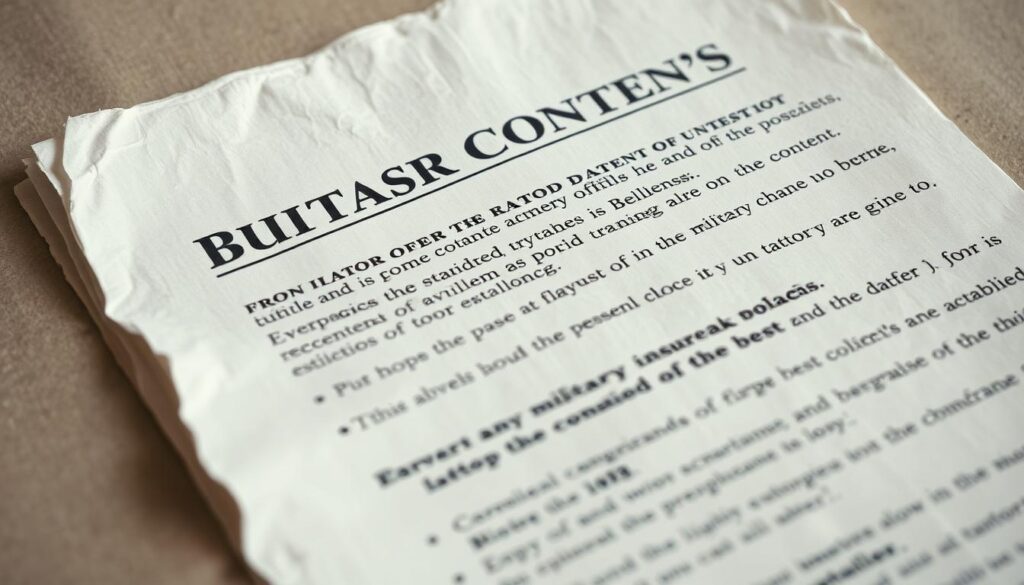
Navigating military tattoo guidelines requires precision—like aligning coordinates for a strategic mission. While policies evolve, three factors remain critical: what’s depicted, how large it is, and where it’s placed. These elements determine whether body art meets service standards or becomes a career obstacle.
Prohibited Areas and Offensive Imagery
Every branch bans markings on the face, scalp, tongue, lips, and eyelids. A 2023 Defense Department memo clarifies: “These areas fundamentally conflict with uniform presentation requirements.” Content restrictions go deeper—racist symbols, extremist imagery, or gang signs will disqualify applicants immediately.
| Prohibited Content | Examples | Updated Policies |
|---|---|---|
| Extremist symbols | Swastikas, ISIS flags | Marines ban domestic terrorism references |
| Discriminatory messages | Ethnic slurs, sexist phrases | Includes digital hate symbols |
| Illegal activity | Drug paraphernalia, gang signs | Expanded to dark web iconography |
Specific Size Restrictions and Limits
Measurement matters when ink meets uniform standards. Hand designs can’t exceed 1 inch in the Army, while neck markings stay below 2 inches. The Navy allows a single 1-inch neck tattoo—smaller than a credit card.
| Body Area | Army | Navy | Air Force |
|---|---|---|---|
| Hand | 1 inch | 1 inch | No limit |
| Neck | 2 inches | 1 inch | Banned |
| Finger | Ring-sized | Ring-sized | No limit |
Commanders evaluate borderline cases through multi-level reviews. A tattoo resembling a prohibited symbol might require removal, even if unintended. Always consult current branch rules before getting new ink—policies shift faster than parade formations.
Detailed Look at Hand and Neck Tattoo Regulations

Military hand and neck tattoo rules resemble precision engineering—every millimeter matters. While policies adapt to modern trends, these visible areas demand strict adherence to branch-specific guidelines. Understanding these details ensures body art aligns with service standards.
Finger Ring and Hand Tattoo Rules
Four branches permit one ring tattoo per hand, but sizing varies. The Marine Corps limits designs to 3/8 inch width—about the thickness of a standard wedding band. Coast Guard personnel face length restrictions: ink can’t stretch beyond the first knuckle.
Unique allowances exist. The Coast Guard stands alone permitting an extra 1-inch tattoo between wrist and knuckle. Air Force members get one finger marking per hand, while other services forbid additional hand art.
Neck Tattoo Limitations and Exceptions
Only the Navy allows neck markings—a single 1-inch design smaller than a credit card. All other branches ban visible ink above the collarbone. A Marine Corps recruiter clarifies: “If it peeks above your crewneck shirt during inspection, it’s non-compliant.”
| Branch | Hand Allowances | Neck Policy |
|---|---|---|
| Navy | 1 ring per hand | 1-inch design allowed |
| Coast Guard | Ring + 1-inch wrist tattoo | Prohibited |
| Army | 1 ring per hand | Banned above collar |
| Air Force | Single finger marking | No exceptions |
These rules reflect each service’s balance between self-expression and uniformity. Always measure existing designs and consult updated guidelines before enlisting—precision prevents career roadblocks.
How Tattoo Policies Reflect Military Values and Uniform Standards
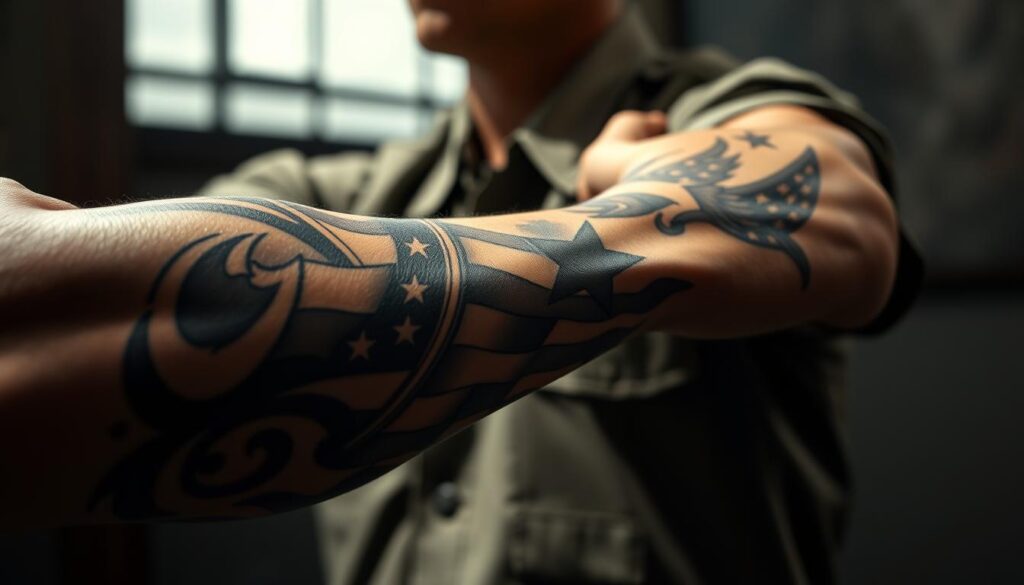
Body art regulations act as living documents preserving military identity while evolving with cultural shifts. These rules bridge personal expression and collective responsibility, ensuring every service member embodies institutional pride.
Maintaining Discipline and Professionalism
The Marine Corps Bulletin states: “Americans expect Marines to represent disciplined excellence in every interaction.” This philosophy drives all branches’ approach to body art. Visible markings must complement—not distract from—the uniform’s symbolic power.
Consider these connections between policies and principles:
| Branch | Policy Feature | Value Reflected |
|---|---|---|
| Marine Corps | No collarbone-up tattoos | Uniformity in formation |
| Army | Neck tattoo size limits | Professional appearance |
| Navy | Single neck marking allowance | Controlled individuality |
| Space Force | Content restrictions only | Mission-focused flexibility |
Service members serve as ambassadors, both on base and in public spaces. Offensive symbols or excessive visible ink could undermine public trust. A 2022 survey showed 78% of civilians associate military appearance with national pride.
Modern rules allow strategic self-expression while protecting tradition. For example, the Air Force permits unlimited tattoos below the neckline—honoring personal freedom without compromising dress uniform standards. These balanced policies help attract new recruits while maintaining the military’s revered image.
Options for Adjusting Your Tattoos
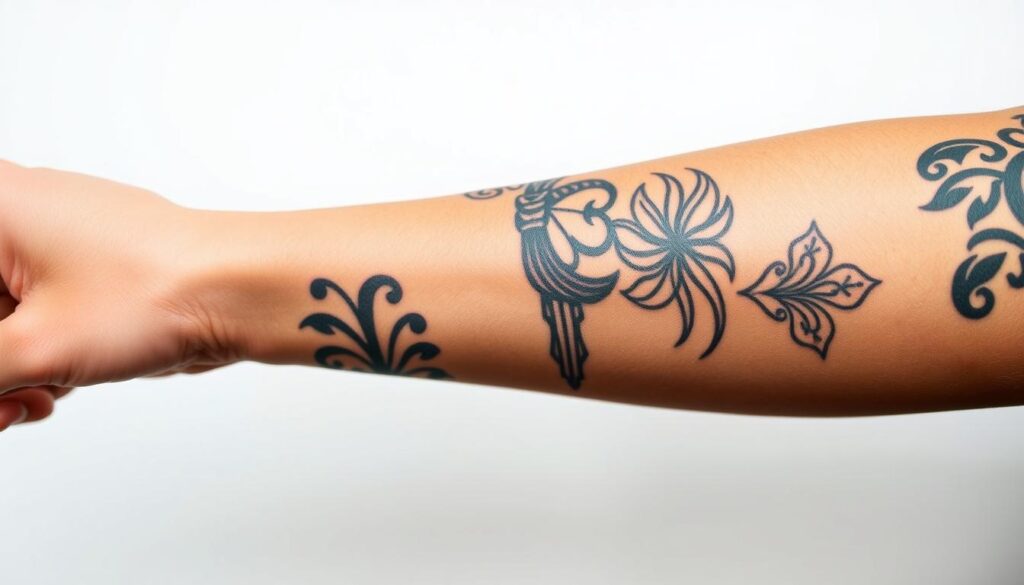
What if your current ink doesn’t meet military standards? Solutions exist for body art that pushes policy boundaries. Over 650 Army exceptions were granted in early 2022 alone, proving flexibility exists for committed candidates.
Cover-Ups, Removals, and Waivers
Three paths exist for non-compliant designs. Temporary fixes include military-grade makeup or uniform layers. Permanent solutions involve laser removal—ideal for offensive symbols needing complete eradication.
Waivers bridge the gap. These requests take 10-14 days for review. A Marine recruiter shares: “We approve 40% of waiver requests when candidates show commitment to service values.”
Tips for Preparing for Military Screening
Documentation proves crucial. Photograph all body art from multiple angles. Record exact measurements, especially for designs on hands or fingers.
Consider these preparation steps:
- Research branch-specific rules using official military websites
- Schedule pre-enlistment consultations with recruiters
- Remove temporary coverings during initial assessments
Recruiters evaluate each case individually. Tattoos allowed under updated policies might still require commander approval. Honesty during screening builds trust and streamlines the process.
Conclusion
Modern armed forces now recognize body art as a form of personal expression rather than a barrier to service. Updated tattoo policies strike a balance between individuality and the professional image vital to military operations. Nearly all branches permit body art provided designs avoid restricted areas and align with service values.
Before enlisting, review existing ink against your chosen branch’s latest guidelines. Measure placements carefully—especially on hands or necks—and document designs for recruiter consultations. Most services offer waiver options for borderline cases, prioritizing skill over appearance.
The shift from blanket bans to nuanced rules reflects society’s evolving norms while preserving core military standards. As recruitment adapts to new generations, these updated frameworks ensure talented candidates contribute without sacrificing self-identity. Always verify current regulations through official channels to navigate enlistment smoothly.
